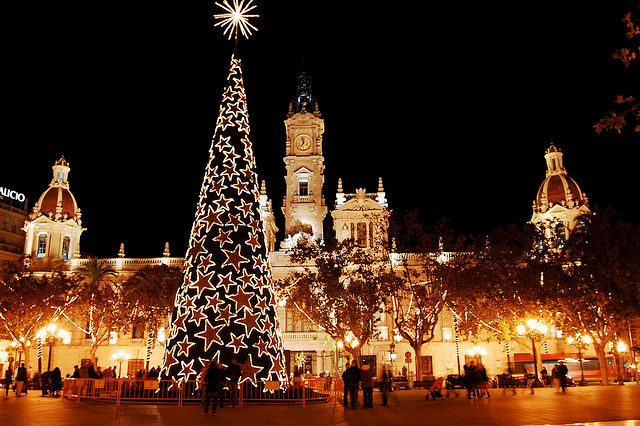Last updated on September 13th, 2019 at 09:11 am.
Although there are many similarities with Christmas traditions in other countries, Christmas in Spain has many differences too. Spending Christmas in another country is a good opportunity to leave some of your old routines behind and try something new. Here are the most important dates in a Spanish Christmas and what you might expect from each one.
December 24th – Nochebuena
This is perhaps the main ‘Christmas’ meal with families meeting in the evening for a traditional dinner of seafood, fish and perhaps roast turkey. This is usually followed by cakes and turrónes – a sweet similar to nougat. After dinner, presents might be handed out and carols sung. In some cases the family will then go to midnight mass called Misa del Gallo (Mass of the Cockerel).
December 25th – Navidad
A traditional family day but not perhaps as hectic as Christmas day in some other European countries. It might involve a trip out to the fair as today is the only day which is classed as a national holiday. The typical traditional Christmas Day lunch is a stew of meatballs called caldo con pelotas.
December 28th – Día de los Santos Inocentes
this is the equivalent of April Fool’s Day and people play good-humoured tricks on each other.
December 31st – Noche Vieja (Old Year’s Night/ New Year’s Eve)
A New Year’s party is called a cotillón and is likely to start late in comparison to celebrations in some other European countries. The Spanish tradition for good luck is to eat 12 grapes at midnight, one on each stroke of the 12 clock chimes.
January 1st – Día Año Nuevo (New Year’s Day)
This is a national holiday and a time when most people visit their family to wish them Feliz Año Nuevo (Happy New Year).
January 5 and 6 – Los Reyes
This is perhaps the most distinct of the Spanish Christmas traditions. Instead of receiving presents from Santa Claus on Christmas Eve children in Spain receive them from the three kings on La Noche de Reyes (The Night of the Kings).
In most towns in Spain children and their families line the streets to see the ‘Kings’ and their procession arrive on January 5th. That night presents are left for the children. During the evening people will eat el roscón de reyes, which is a ring-shaped biscuit set with pieces of frosted fruit to symbolise the rubies and emeralds and other precious stones on the cloaks of the Three Kings.
No comments yet
There are no comments on this post yet.




Leave a comment